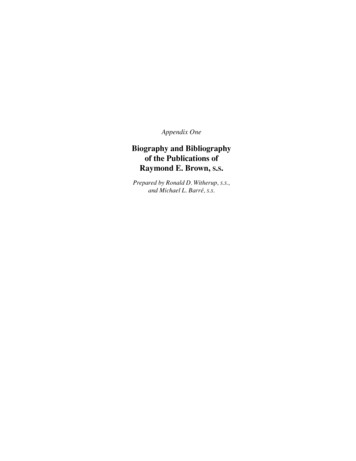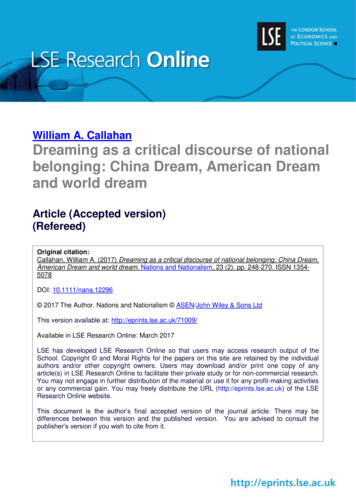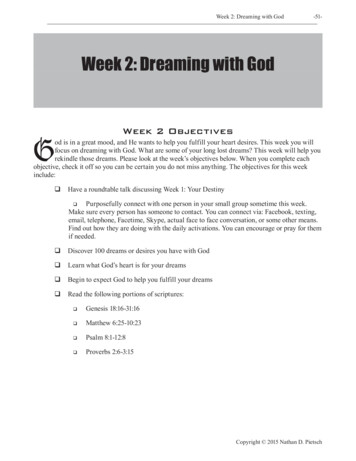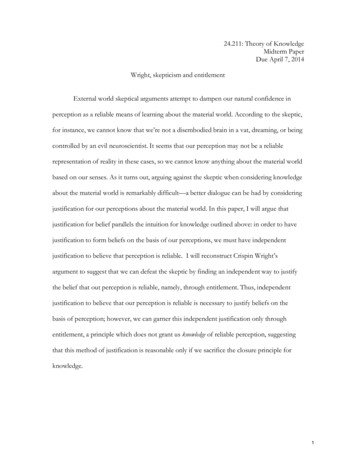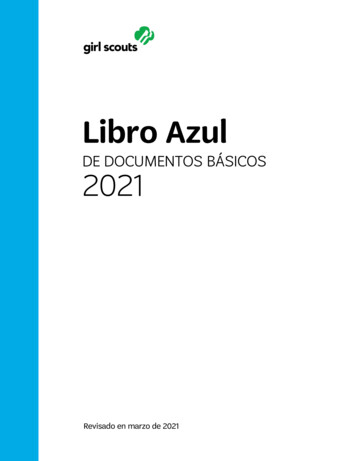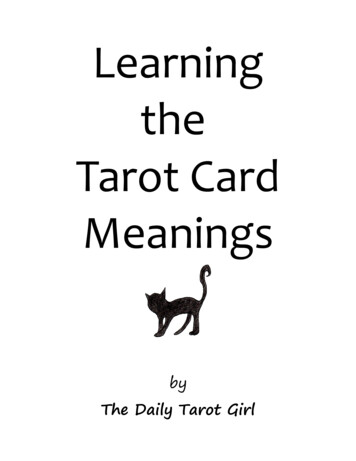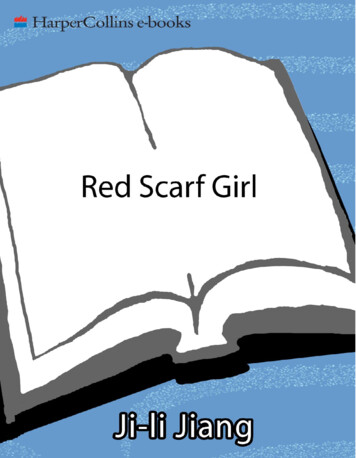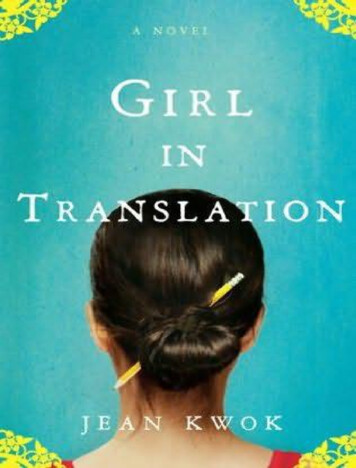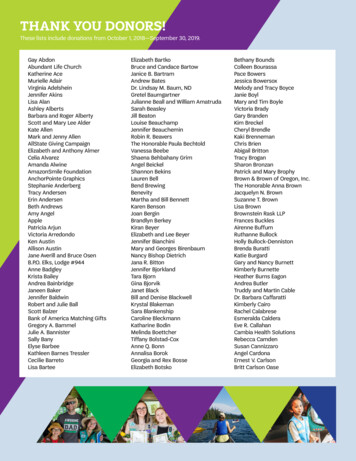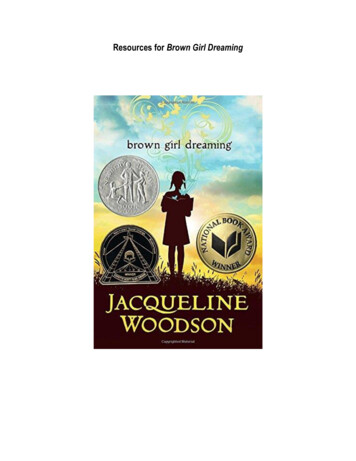
Transcription
Resources for Brown Girl Dreaming
IN-CLASS INTRODUCTIONThis lesson is designed to provide students with a one-class introduction to the book. The lessoncan be used to start off a class reading of the text, or to encourage them to read it independently.As a recipient of One Book resources, the Free Library requires that you devote one classperiod to introducing Brown Girl Dreaming to students, either using this lesson or your ownplan.Introduction Option #11. Let students know they are going to be meeting a character named Miss Bell. Take notesor just collect ideas in your head: what kind of person is she?2. Play the video of Woodson reading the poem:https://www.youtube.com/watch?v b5P3Y06co543. Discuss: What kind of neighbor is Ms. Bell? Who are the marchers, and what are theymarching for? Is Ms. Bell a good person for staying home? Why does she make thechoices that she does?Introduction Option #21. Ask students to write four statements using the following three words as an opener:“I am born”Give them additional prompts: WHERE were they born? WHAT time of day, what day of theyear, what year? WHO lives where they are born? WHAT happens there? HOW do theyrelate to that place now?2. Read the first poem of the book. Where was Woodson born? What does she need thereader to know about her place in the world?
DISCUSSION QUESTIONSFrom Penguin’s Guide to Jacqueline Woodson: oodson Guide 15 6p WEB.pdf1. Jacqueline’s mother tells her children that they will experience a “moment when you walk into aroom and/no one there is like you” (14). Have you experienced this? What might this feellike?2. Why does Woodson structure her memoir into five distinct parts? How does this choice add tothe story?3. Where does Jacqueline start to see change happening in her life? Where does she start to see itin the world in which she lives?4. What is Jacqueline’s attitude toward God and religion? How does she seem conflicted?5. Jacqueline loves writing because it allows her to create the worlds she imagines. What worlddid she create through her memoir? Is there an end to her story?
SUGGESTED ANALYTICAL & CREATIVE ASSESSMENTSEquality PartyOn pages 3-4, Woodson lists several names of people fighting for a similar goal. Divide the classinto groups. Have each group research and explore the following: a) What was this person’s maingoal? b) What philosophies and strategies did he/she use to reach this goal? Once the research iscomplete, students prepare for and hold an Equality Party where students attend with name tagsand in character as the people they researched. Instruct them to discuss with other “attendees”how they fought for equality using their unique strategies and techniques. After the party, thegroups discuss what they learned about the other historical figures through the conversations atthe party. How were they similar and different from one another?Poetry Tie-insBrown Girl Dreaming is a unique story—it is Woodson’s personal journey and it is told through freeverse. A dream book for teachers to use in the classroom! Explore why Woodson may havechosen poetry vs. prose to tell her story and the effect this has on the reader. Have studentschoose their favorite lines and rewrite them into prose. How does this affect the emotion behind thewords, the author’s purpose, and the pictures that are created in our minds? Or does it? Havestudents create their own historical haiku poetry books while studying a civil rights unit andread/perform them at an assembly. Or have them write their own mini-memoir in verse, chock-fullof imagery.Showing vs. TellingWoodson is a master of showing vs. telling in her writing. Close read “the ghosts of the nelsonvillehouse” on pages 10-12. Find examples where Woodson describes a place or a person. What elseis she saying in these lines? What does she say explicitly, and what can you infer from the text?What techniques does she use to show us (e.g., imagery, personification, line breaks) and whatexactly is she showing? How is this different from telling? Direct students to identify other lineswhere Woodson shows in her writing. Challenge your students to write their own poems wherethey practice this technique.This I BelieveThrough Woodson’s odyssey searching for her identity in all of the worlds she’s navigated, shestates “I believe that there is good in each of us/no matter who we are or what we believe in” (317).What do your students believe and know to be true? Examine the NPR series This I Believe. Listento and read several essays of your choosing. Ask students what they all have in common. How iseach unique? What elements go into writing one of these essays? Walk students through thewriting process to write their own This I Believe essay. Take it a step further and record them toshare with other schools who are doing the same project!
ONLINE RESOURCESLESSON PLANS & RESOURCESThe Classroom BookshelfIncredibly comprehensive list of lesson ideas dealing with poetry, thematic elements, and currentevents, as well as a long list of links to interviews and 12/brown-girl-dreaming/Developing Writers CurriculuA four-unit series of lessons that focus on analysis, creation, and performing of abi/brown-girl-dreaming-sample-syllabus/Exploring Perspectives on Desegregation using Brown Girl DreamingA two-day lesson that encourages students to explore a larger issue in the civil rights era by usingboth content from the book and outside ation-using-31133.htmlMULTIMEDIAVideo of Woodson Reading “Miss Bell and the Marchers”A two-minute video.https://www.youtube.com/watch?v b5P3Y06co54Code Switch InterviewThirty-Seven minutes, including discussion of growing up as a Jehovah’s witness, coming out asgay to her family, and growing up up in the segregated South before moving to New ing-out-and-saying-hi-to-strangersMeet the Author SeriesFive short videos, 3-5 minutes in length, where Woodson discusses her inspiration for writing aboutcharacters underrepresented in literature.https://www.teachingbooks.net/author collection.cgi?id 50&mid 90&a 1
period to introducing Brown Girl Dreaming to students, either using this lesson or your own plan. Introduction Option #1 1. Let students know they are going to be meeting a character named Miss Bell. Take notes or just collect ideas in your head: what kind of pers
